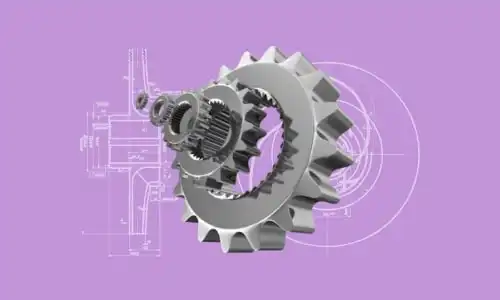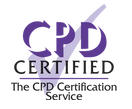
Learn the basics of
Technical drawing (AutoCad and other software)
We start off the module as we dive right into the understanding of technical drafting and various drafting career paths this course may take you on. We look at the tools and materials required to be able to create your very own technical drawings both by hand as well as in your computer-aided software program, AutoCAD.
84,000
Graduates
All levels
Certified

Course details
MODULE 1
Diploma in Technical Drawing
MODULE 1
Diploma in Technical Drawing
1.Introduction to Technical Drawing
Kickstart your technical drawing journey and dive into everything you need to know about the basics of technical drawing. The first lesson in this technical drawing course aims to provide a holistic understanding of all the industries that use technical drawing. The lesson will also look at the career opportunities that will become available to you after completing this course. You will learn about the practical side of technical drawing before looking at the computer-aided software programs such as CAD, REVIT and 3D SketchUp that you will use on your journey.
2.Gathering the Tools
Communication is key in the interior design, architectural and engineering professions, and this is where this lesson begins. Communication develops through drawings so this lesson will investigate the expectations when it comes to creating your technical drawings. You will look at the communication tools in a holistic view as we touch on drawing tools such as section views, drawing schedules, assembly drawing and many more. Without your drawing tools you wouldn't be able to create your drawings, so before the lesson ends, you will learn about the different tools that are used for manual and CAD drafting.
3.Start With a Line
What may seem like an incredibly simple concept, in fact, plays a huge role in how we read technical drawings. A simple line is the foundation to your drawings and, therefore, you cannot underestimate the topic of line types and line weights as they are equally of huge importance when creating your technical drawings. In this lesson, you will look at everything to do with drawing line types and investigate the meaning of line weights. You will look at how these elements provide great insight into your drawings, and once the foundation has been laid, you will learn how to create your very own line weight style and template for all your drawings going forward.
4.Evolution of Technical Drawing
Drafting is one of the oldest documented professions. Did you know that the earliest site of drawing was found on cave walls? This is a very exciting lesson as you journey through the evolution of drafting and the development of technical drawing. Dig deeper into the development of technical drawings and start to see the evolution of drawing standards and drafting tools. An extremely important lesson and one not to be missed!
5.The Title Block
Setting up your drawing is the foundation to technical drawing. Without a title block and the relevant information added to your technical drawing, your drawings are incomplete. In this lesson, you will learn everything you need to about the title block, what information needs to appear on the title block and how to create your own title block template by hand. On the topic of creating manual drawings, this lesson also takes a deeper look at the importance of free-hand sketching your preliminary ideas and concepts. This is an important lesson that will assist you in developing an idea and setting up your title block to present your idea.
6.Getting Creative With Shape
Shapes are the foundation and starting point to your technical drafting journey. Shape is imperative to construction and drawing development. In this lesson, you will learn the ins and outs of various geometric shapes as well as the importance of shape in technical drafting.
7.The Technique of Geometric Construction
Shape has the ability to transform your technical drawings. In this lesson, you will build on what you learned in the previous lesson and start the process of geometric construction. You will learn the ins and outs of geometric construction of various shapes, such as the circle, line and angle, as you use board drafting techniques to develop the concept of geometric construction.
8.ABC of Annotation
Adding detail to your drawing in the form of annotation is what this lesson is all about. You will look at what annotation is and various forms of annotation before you tackle annotation text on your drawings. Some of the areas focused on are annotation text and style as well as the general methodology surrounding annotating your technical drawings. Before the end of this lesson, you will develop your own annotative style.
MODULE 2
Intermediate in Technical Drawing
MODULE 2
Intermediate in Technical Drawing
1.The Ins and Outs of Loci
Did you know that the locus of a point is the path traced by a point as it moves in accordance with set conditions and constraints? Well, do not fear, this is exactly what you will learn about in this lesson — loci and what it has to do with your technical drafting. At the end of the lesson, you will look at how to apply loci to a drawing by hand. This lesson is very technical and one that is guaranteed to get your technical juices flowing.
2.Let’s Get Projecting
Kickstart module 2 with a look at the theory of projection and preparation of your projection drawings. In this lesson, you will navigate geometric construction as you apply them to your various projection methods. This lesson will also cover orthographic projection, multi-view projection and the difference between the first and third angle projection. A very exciting lesson so come prepared!
3.Stepping Into Perspective
A perspective view can often be a vital component to a technical, construction or manufacturing drawing. Perspective views hold key information for completing the drawing pack. This is where lesson 3 starts off, covering everything about perspective views and the types of perspective views that you will come across such as your one-point, two-point and three-point perspective views. This lesson gets practical, showing you how to create your very own one-point and two-point perspective drawings by hand.
4.Developing the Surface
This lesson will ensure you understand what the development of a surface means to technical drawing as well as the importance of developing a surface. Tap into parallel line development, radial line development and triangulation development. At the end, you will create some of your very own surface development drawings.
5.The Blueprint
This lesson is all about setting up your technical drawings with some of the drawing techniques covered in previous lessons. Start off by looking into the blueprint — the foundation for any manufacturing or construction of anything. From here, you will look into the plan elevation and section drawings before breaking them up into bitesize building blocks. This lesson is sure to leave your technical geek wanting more.
6.The Elevation
Part two of your lesson on blueprints moves straight into elevation drawing views. In this lesson, you will focus on what elevation views are, how they are relevant to your technical drawing and the importance of the information shown on an elevation drawing. Elevation drawings are vital for showing heights and finishing features to facades of building, objects and projects, and with that understanding you will tackle some important terminology in an elevation drawing, using it to create your very own elevations of a space you work, live or play in. Bring your sketchbooks along for this one!
7.The Section
Jumping into part three of blueprints, this lesson will kick off by tackling section view or section drawing. To start, you will learn what section views are as well as what they look like in technical drawings. From here, you will look at the purpose of a technical drawing and their relation to the plan drawing, with a strong focus on multi-view projection. You will then touch on the various section drawing views that one would expect to come across and make use of in your technical drawing pack. The lesson ends with a tutorial on how to set up your very own section view and drawing by hand. Another practical lesson so be sure to bring along your sketchbooks again!
8.Scale and Measurement
Dimensions are vital to any drawing as they give the manufacturer, contractor or creator an idea of the sizes of each element for accurate construction and manufacture. In this lesson, you will learn everything you need to know about dimensions as well as the various dimension styles. This lesson is practical as you start to dimension up your own drawings which will form part of your final portfolio.
